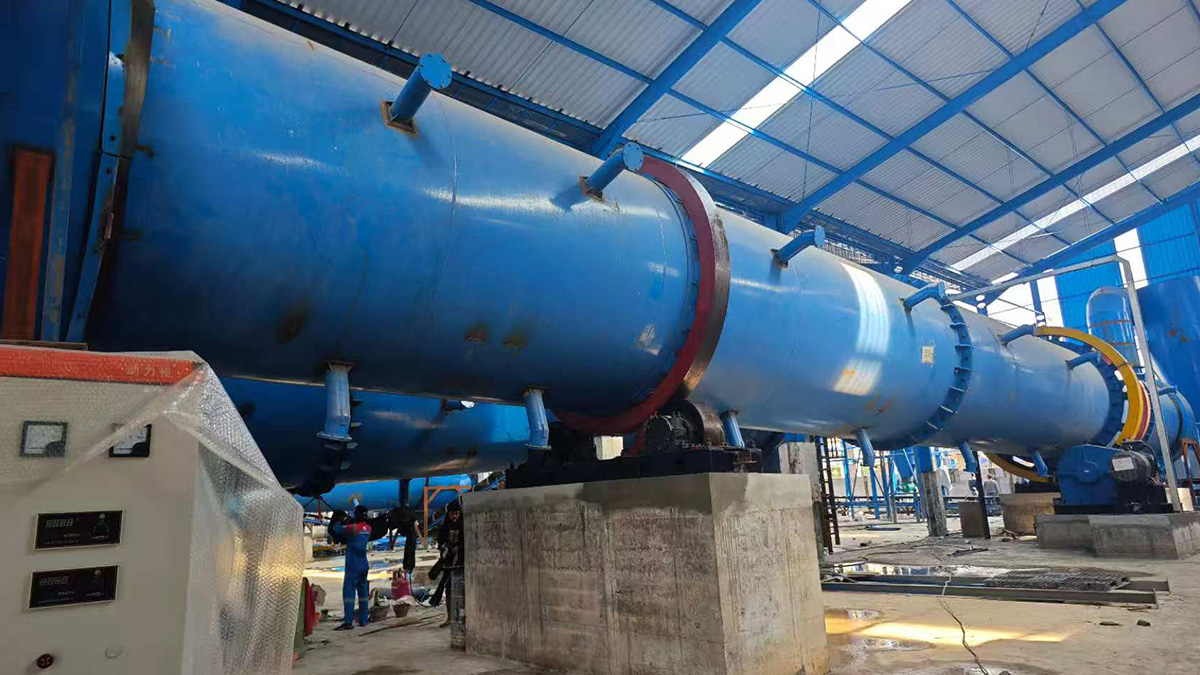Description
- What is a Compound Fertilizer Rotary Drum Granulation Production Line?
- Characteristics of a Compound Fertilizer Rotary Drum Granulation Production Line
- Applications of Compound Fertilizer Rotary Drum Granulation Production Line
- Prices of Compound Fertilizer Rotary Drum Granulation Production Line
- Purchasing Considerations for Compound Fertilizer Rotary Drum Granulation Production Line
What is a Compound Fertilizer Rotary Drum Granulation Production Line?
A Compound Fertilizer Rotary Drum Granulation Production Line is a comprehensive system of equipment designed to manufacture granulated compound fertilizers. At the heart of this setup is the rotary drum granulator, a large, rotating cylinder that transforms raw materials—which are typically powdered or in a slurry form—into uniform, solid granules. This process involves introducing the ingredients, such as nitrogen (N), phosphorus (P), and potassium (K), into the rotating drum. As the drum tumbles, a binding agent like steam or water is sprayed in, causing the particles to stick together and form spherical pellets. The granules are then processed through subsequent stages, including drying, cooling, and screening, to ensure they meet quality standards for size and moisture content before packaging.
Characteristics of a Compound Fertilizer Rotary Drum Granulation Production Line
This type of production line is prized for its high efficiency and adaptability. It can handle a wide variety of raw materials and produce fertilizers with different NPK ratios, giving manufacturers great flexibility. A key characteristic is the high granulation rate, often exceeding 90%, which minimizes waste and maximizes output. The final granules are known for their high sphericity, smooth surfaces, and uniform size, which are ideal for easy handling, storage, and application with agricultural machinery. The continuous operation of the rotary drum granulator allows for large-scale, high-volume production, making it a cornerstone for major fertilizer manufacturing operations.
Applications of Compound Fertilizer Rotary Drum Granulation Production Line
The primary application for this equipment is the large-scale production of compound fertilizers for the agricultural sector. These fertilizers are essential for sustainable farming, as they provide balanced nutrients to increase crop yields and improve soil health. The versatility of the production line allows it to produce customized fertilizer formulas for specific crops, soil types, and climates. This includes standard NPK fertilizers, but also more specialized products that incorporate trace elements, organic matter, or controlled-release agents, catering to the evolving needs of modern agriculture.
Prices of Compound Fertilizer Rotary Drum Granulation Production Line
The price of a Compound Fertilizer Rotary Drum Granulation Production Line can vary widely, influenced by several factors. Costs typically range from tens of thousands to several million dollars. The final price depends on the production capacity (measured in tons per hour), the level of automation, the quality of the materials used in the machinery's construction, and whether the system is new or refurbished. A smaller, semi-automated line will have a much lower price point than a large, fully integrated, and automated system designed for continuous, industrial-scale output. Potential buyers should request detailed quotes from multiple manufacturers to compare not only the initial cost but also long-term operational and maintenance expenses.
Purchasing Considerations for Compound Fertilizer Rotary Drum Granulation Production Line
When looking to purchase this equipment, careful consideration of several key factors is crucial for a successful investment.
- Production Capacity: Match the line's output to your specific business plan and market demand. Choosing a line that is either too small or too large can lead to operational inefficiencies and wasted capital.
- Raw Material Compatibility: Verify that the equipment is designed to handle the specific raw materials you plan to use. This includes checking for compatibility with different physical forms (e.g., powders, liquids, slurries).
- Level of Automation: Decide on the degree of automation that best fits your budget and labor costs. While a higher level of automation can reduce reliance on manual labor, it requires a larger initial investment.
- After-Sales Service and Support: Ensure the manufacturer provides robust after-sales support, including installation guidance, technical training for your staff, and a readily available supply of spare parts.
- Energy Consumption: Evaluate the system's energy efficiency. A line with lower power consumption will significantly reduce long-term operating costs.
Tai'an Hongxin Environmental:
Supply of High-Quality and Efficient Fertilizer Production Equipment, Straw Processing Equipment, Waste Treatment Equipment and Mining Equipment. If you are looking for fertilizer production equipment and production lines, feel free to contact us at any time.- Whatsapp(Tel): + 86 139-0548-5429( Mr. Li)
- E-mail: tahongxin@gmail.com



